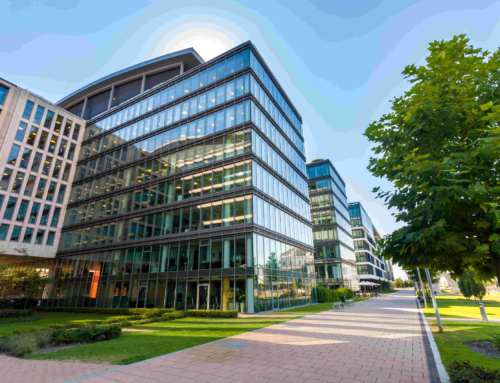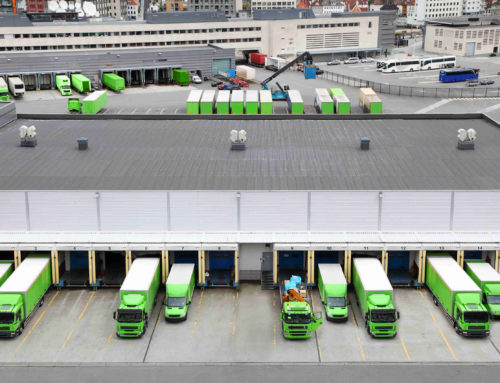Research vs. Reality. It’s an epic battle. Once I realized that an investment in commercial real estate was within reach, I went into heads down learning mode. I read articles, blog posts, forums, watched YouTube videos, listened to podcasts, and picked all the relevant brains I knew. I knew what to do and what to look for. However, as I’ve constantly confirmed throughout my life, experience is the best teacher. I say that as a disclaimer. I’m documenting what we did. I’m not claiming that this is what you should do. Hopefully, this helps you if you’re considering going down this path…or at least you find our story entertaining. With that in mind, here’s the story of how we bought and leased our first commercial property. Before going any further, if you haven’t done so already, I strongly encourage you to read part 1 of this series. It provides some good context to some of the information in this post.
The Lingo
As we went into commercial real estate research mode, a few key terms kept appearing. There are a lot more than these, but it’s kind of like items from the Taco Bell menu. Everything is just different combinations of a handful of core ingredients. I worked at Taco Bell in high school so I’m a subject matter expert.
How Did We Find the Property
Like pretty much any research I do, it started with Google. I searched for “commercial real estate for sale in atlanta”. The first result that came up was Loopnet. Loopnet is like other real estate search sites, but it’s focused on commercial investments. This is the easiest way to get an idea of what’s out there and what you can realistically get for your money. However, this is not the place to find a deal. The best deals in real estate, whether it be residential, commercial, or land, are found off the market, meaning the property hasn’t been publicly listed yet (i.e. less competition). Once a property makes it to a site like Loopnet, that usually means that one or more potential buyers have already passed on the opportunity. Now that doesn’t mean it’s a bad investment, it just means it’s not the best deal.
Clicking through Loopnet definitely helped put things into perspective and led me to research some other things (including the terms above), but I quickly started to feel overwhelmed and discouraged because the properties in my price range looked like they’d been built by a Fortnite character. This is when I reached out to Anil Vaswani. Anil is our agent that I referenced in part 1. Anil not only brought a wealth of commercial real estate knowledge to the table as well as patience and education for a couple of rookies, but he also brought an invaluable network which he tapped on our behalf to find us deal opportunities that we wouldn’t have been able to find ourselves. This came from him having relationships with other agents and owners and knowing when properties were available before they hit the mainstream.
This next piece doesn’t apply to us in this situation, but another effective strategy is networking. No, not cold-messaging people on LinkedIn, but actually talking to people in real life. I have a friend who owns a laundromat. You know how he got it? Of course you don’t. I haven’t gotten to that part of the story yet. He went to a laundromat near his home and struck up a conversation with the owner. He continued to do this on occasion for the next couple of years. During that time, he also made it known that he’d be interested in buying if the owner ever wanted to sell. Fast forward…the owner was ready to sell and my friend was first in line for an off-market purchase.
The Numbers
Alright, let’s get down to the meat of this thing and what you’re really interested in…the numbers. I’ll first lay it all out and then provide some context.
- Property Type: Commercial duplex (think retail strip mall, but with only 2 stores)
- Property Age: 50+ years (it’s in an historic downtown area)
- List price: $375,000
- Purchase price: $360,000
- Down payment: 20% ($72,000)
- Mortgage terms: 5 year term with 30 year amortization at 4.95% (modified in 2020 to 3.3%)
- Mortgage payment: $2023/mo ($1761/mo after loan modification)
- Rental income: $3,625/mo (with 3% annual increases)
- Taxes and Insurance: ~$6,000/yr (includes property insurance, city taxes and county taxes)
- Up Front Repairs: ~$25,000
Now, let’s go down the list and talk about the numbers. We were able to negotiate slightly on the price mostly due to the subpar condition of the roof, which ended up needing replacement. For the loan, Anil helped us find a small bank that was willing to do a 30 year mortgage and only 20% down. It’s probably not possible to find terms like this in today’s economy, but pre-pandemic, banks were a little more lenient with commercial loans. Once interest rates dropped in 2020, we were able to do a no-cost modification to lower the interest rate, saving us almost $300/mo. The rental income is from 2 tenants. I’ll talk more about the tenants below. There’s no negotiation when it comes to taxes, but shopping around for insurance is a must. Instead of auto-renewing the insurance, when it’s time to renew the annual policy, I shop around. Rates are constantly changing. Doing the math using the formulas above (excluding the one time repairs), this put us at a cap rate of just over 10%. As for the property repairs, we had an inspection done so we knew what needed repair…or at least we thought we did. Some of the repairs were more involved than anticipated and others were unexpected requirements from the city in order to bring the building up to code so it could be legally leased to a business.
The Tenant Search
Here’s where the cliché often heard in real estate, “location, location, location”, played in our favor. In order to find a tenant, you need to market your space. The typical avenues include online advertising, hiring a broker, or physical signage. Basic online advertising packages on somewhere like Loopnet will run you somewhere in the neighborhood of $100/mo. A broker typically charges about 5% of the total rent, meaning the rent for the entire term of the lease. For instance, if the broker finds you a tenant that signs a 5-year lease at $1,000/mo, the total value of that lease is $60,000. That means that you pay the broker 5% of that, or $3,000. In our case, because we had purchased a location with high foot and vehicle traffic, good ole window signage was effective enough to grab the attention of a national franchise and land us a multi-year contract agreement. We paid $30 on Etsy to have a custom “For Lease” sign made, which displayed the Google Voice number I had created. It took less than 24 hours after hanging the sign in the window to get our first call.
After fielding too many phone calls from not only potential tenants, but also just nosey people who just wanted to see how much the space was renting for, I set up a voicemail on Google Voice with all of the key information about the space and then switched on the Do Not Disturb setting. This way, every caller went straight to voicemail and the more serious prospects that wanted to know more than the price and square footage, could leave a message with their contact information and I could return their call at my convenience. From closing to signing the lease with our tenant, it took about four months.
“But wait, I thought it was a duplex.” If that’s what you’re saying to yourself, you’re right…and you’re paying attention. One unit of the space was already rented to a long time tenant so we took over that lease. That was helpful in covering expenses while we worked to get the other unit occupied.
The Management
We’re not property managers, but like most other steps in this process, we took the fake-it-til-you-make-it approach. When I talk about management, I’m talking about negotiating the lease terms, drawing up the lease application and contract, getting commercial property insurance coverage, establishing payment terms, addressing tenant concerns, ensuring compliance with city guidelines, and at least a dozen other things that I’ve probably mentally blocked in an effort not to trigger PTSD.
One of the most challenging and growth-enabling experiences for us was the buildout process. The buildout is the phase where a tenant remodels the space to fit their business branding and vision. This includes construction, painting, signage, etc. Depending on the tenant, the condition of the space and its previous use, this could mean anything from the relatively simple swapping out of some signage and paint colors to a complete gut and remodel. Given the age of our building and the incoming tenant, they were more on the gut and remodel end of the spectrum.
As part of negotiations with the tenant, the landlord makes concessions and allowances are agreed upon for the buildout. The process is mutually beneficial. The tenant is updating/upgrading the space, meaning that the property is aesthetically enhanced, generally equating to a more attractive property value. This is a benefit for the landlord (us). At the same time, the tenant is also trying to operate a business and they aren’t making income from the space while construction is ongoing. Therefore, the landlord makes concessions in the form of a cash allowance (e.g. $x per square foot) or reduced/free rent for some period of time. We had no idea how this worked and were frantically Googling and texting our commercial contacts with questions between emails with the tenant so we could reply and not sound like the complete noobs that we were.
So How’s it Going Now?
It’s been two and half years since we closed on that property. Not to jinx things, but the past year and a half or so have been almost completely hands off. The first of the month rolls around and checks show up in our mailbox. Yes, both of our tenants, despite us setting up a digital payment option, still send us physical checks via USPS. It takes about 60 seconds to make the mobile deposits so I won’t complain.
The middle part of 2020 was a little crazy and brought some uncertainty with Covid. One of our tenants was significantly impacted by the closing of some of the businesses they counted on. In response, we reduced their rent for 3 months and did the same for the other tenant to give them time to rebound and get PPP money in place. During this same period, I had been laid off from my job so empathy was in abundance.
In a future post, I’ll talk about our journey with the second commercial property we closed on recently. I hope this post was insightful. If you’re interested in getting started in commercial real estate and want to hear an unfiltered perspective from some first-timers, give me a shout!








Thank you! This is very informative!! Congratulations on your investments.
Thanks for reading!
Wonderful and informative read! Great job the Gunn family!
Brilliant and inspiring as usual!